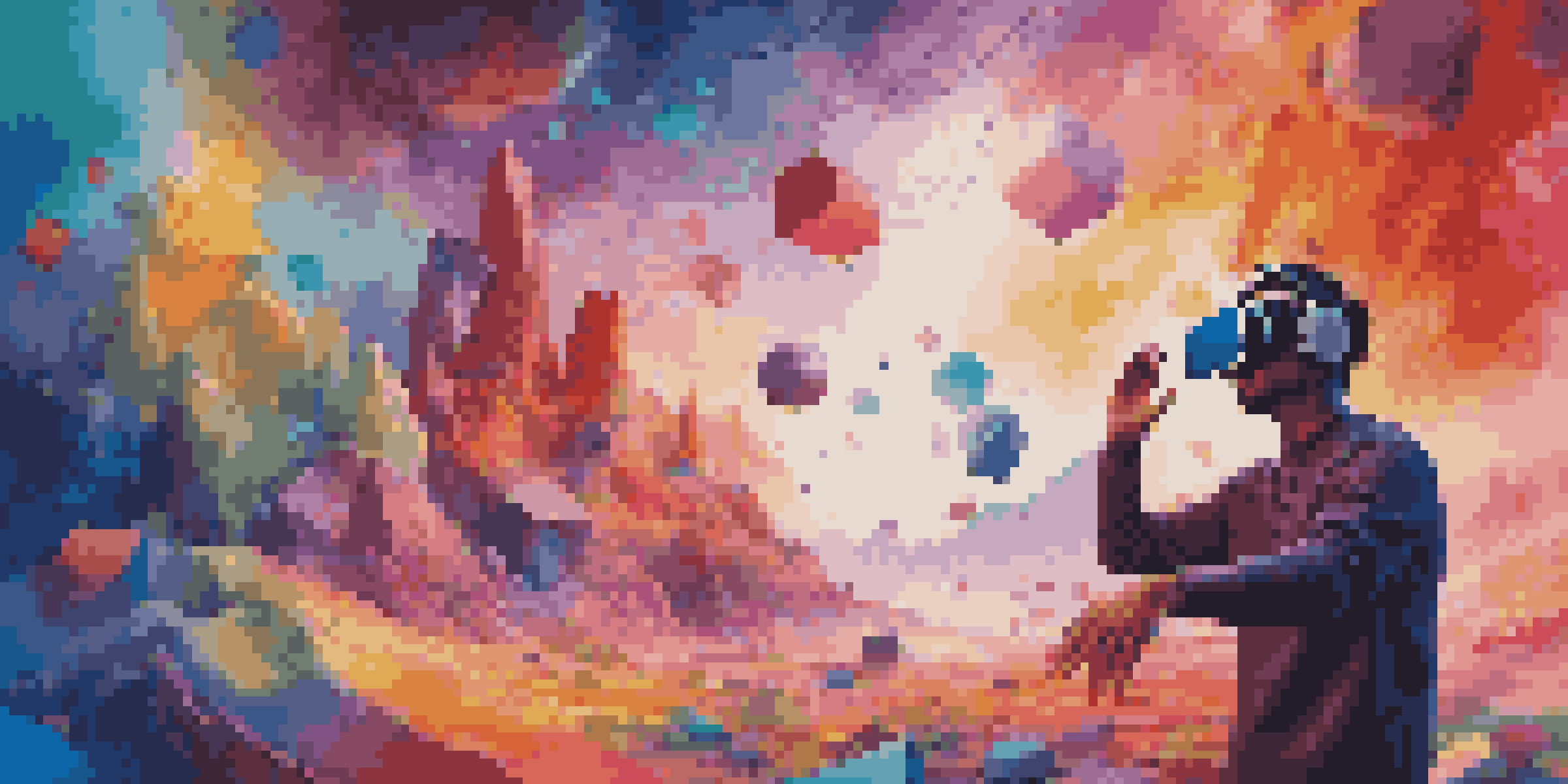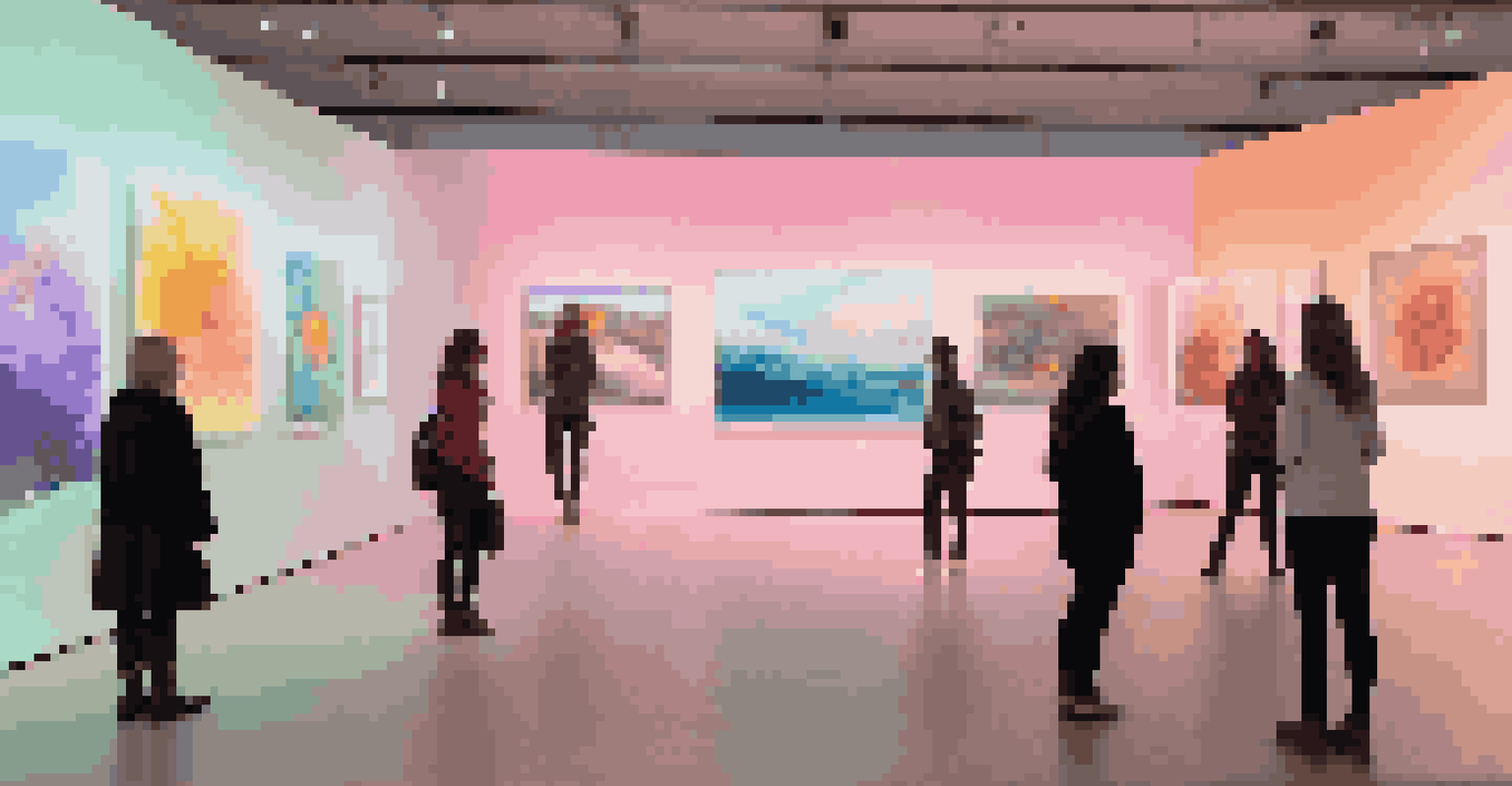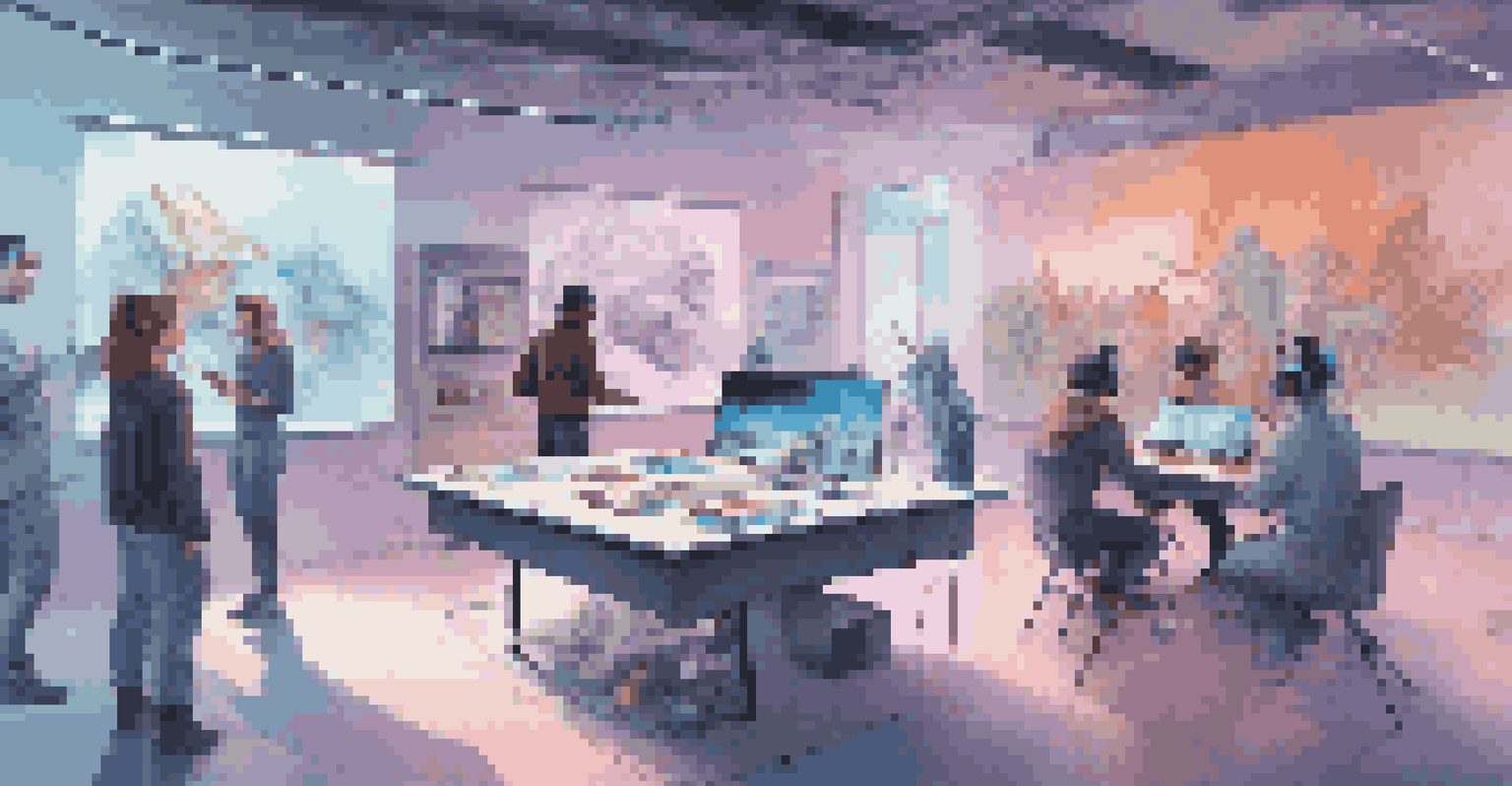Art and Technology: Virtual Reality's Impact on Artistic Experience

Understanding Virtual Reality in Art
Virtual reality (VR) is an immersive technology that transports users into a digital environment. This experience can be particularly transformative in the realm of art, allowing artists and viewers to explore creativity in ways that traditional mediums cannot. Imagine stepping inside a painting or sculpture and interacting with its elements—this is the allure of VR in artistic expression.
Virtual reality is the first step in a world where computers can become more transparent to our lives.
Art has always pushed boundaries, and VR takes this to a new level by enabling artists to create entirely new worlds. For example, a painter can design a 3D landscape that viewers can walk through, experiencing colors and forms in a truly interactive manner. This fusion of art and technology not only enhances the viewer's experience but also challenges the artist to think beyond conventional limits.
Moreover, VR offers a platform for collaboration across disciplines, where artists, tech developers, and audiences can come together. This cross-pollination of ideas can lead to innovative projects that redefine how art is created and consumed. As VR technology continues to evolve, its role in shaping the future of artistic expression becomes increasingly significant.
The Immersion Factor: Engaging the Senses
One of the most compelling aspects of VR is its ability to immerse users fully in an experience. In the context of art, this means engaging not just sight, but also sound, touch, and even smell in some cases. Imagine walking through a virtual gallery where each artwork comes alive with audio that enhances its narrative, creating a multi-sensory experience.

This level of immersion can evoke emotional responses that traditional art forms may struggle to achieve. For instance, a VR installation might allow you to explore the emotional landscape of a piece by altering the environment based on your interactions. This interaction can create a deeper personal connection to the art, making the experience memorable and impactful.
VR Transforms Artistic Expression
Virtual reality allows artists to create immersive experiences that engage viewers in interactive and innovative ways.
Furthermore, as artists experiment with these sensory elements, the boundaries of storytelling within art expand. VR enables artists to create narratives that unfold around the viewer, making them an integral part of the story. This evolution in storytelling not only captivates audiences but also invites them to reflect on their own experiences and emotions.
Accessibility: Reaching Broader Audiences
Virtual reality has the potential to democratize access to art, allowing audiences who might not traditionally engage with it to participate. For example, VR can bring museum exhibitions into homes, enabling anyone with a headset to explore renowned artworks without geographical barriers. This accessibility can foster a greater appreciation for art among diverse audiences.
Art is the most beautiful of all lies; it is a way of capturing reality as we dream it.
Additionally, VR experiences can cater to different learning styles and preferences. Some viewers may find it easier to connect with art through interactive experiences rather than simply observing. By providing various engagement options, VR can help bridge the gap between seasoned art lovers and those new to the scene.
This broader reach is particularly important in promoting underrepresented artists and art forms. Virtual exhibitions can showcase diverse perspectives and cultures, highlighting voices that may have been overlooked in traditional settings. By making art more accessible, VR can play a crucial role in shaping a more inclusive art community.
Innovative Artistic Practices Enabled by VR
Virtual reality is not just a tool for viewing art; it is also a medium for creation. Artists are using VR to develop new forms of artistic practice, such as virtual painting and sculpting. Programs like Tilt Brush allow creators to paint in a 3D space, leading to works that exist solely within the digital realm.
This new artistic frontier encourages experimentation, as artists can manipulate their creations in real-time, adjusting colors and forms with ease. The ability to create and modify in a virtual space can lead to unexpected outcomes, pushing the boundaries of what art can be. For instance, an artist might design a piece that changes based on the viewer's actions, creating a dynamic interaction that traditional media cannot offer.
Enhanced Accessibility to Art
VR democratizes access to art, enabling broader audiences to experience and appreciate artistic works from anywhere.
Moreover, the collaborative nature of VR can lead to collective works where multiple artists contribute to a single piece in real-time. This collaborative approach fosters community and creativity, allowing artists to share ideas and techniques in ways that transcend physical limitations. As VR technology continues to advance, we can expect to see even more innovative practices emerging.
Challenges and Limitations of VR in Art
While virtual reality presents exciting opportunities for the art world, it also comes with its challenges. One major concern is the accessibility of the technology itself. Not everyone has access to VR headsets or the required hardware, which can create a divide between those who can experience VR art and those who cannot.
Additionally, the learning curve associated with VR technology can deter some artists from exploring its potential. Familiarizing oneself with the software and hardware can be daunting, especially for those who are accustomed to traditional forms of art. This barrier can limit the diverse range of voices in the VR art space.
Finally, there is the question of permanence and preservation. Digital artworks created in VR may face challenges regarding longevity and storage. As technology evolves, older formats may become obsolete, potentially putting these innovative works at risk. Addressing these challenges will be crucial for the sustained integration of VR in the art world.
The Future of Art: A VR Perspective
As we look ahead, the future of art in a virtual reality landscape appears promising. With continued advancements in VR technology, we can expect to see increasingly sophisticated experiences that blur the lines between the digital and physical worlds. Artists will likely continue to push the boundaries of creativity, experimenting with new forms and ideas.
Moreover, as VR becomes more mainstream, the art community may see a shift in how we view and value art. Traditional galleries and museums may begin to incorporate VR as a standard method of showcasing work, allowing for innovative exhibition formats that challenge conventional norms. This could lead to a cultural shift in how art is experienced and appreciated.
Challenges of VR in Art
Despite its potential, VR in art faces challenges such as technology access, learning curves, and preservation issues.
Ultimately, the marriage of art and technology will likely create a more vibrant and diverse artistic landscape. By fostering collaboration, accessibility, and innovation, virtual reality can help shape a future where art is not only viewed but truly experienced, inviting everyone to participate in the creative conversation.
Conclusion: Embracing the Art-Tech Revolution
Virtual reality is undeniably reshaping the artistic experience, opening up new avenues for creation, engagement, and accessibility. As artists and audiences embrace this technology, we witness a transformation in how art is perceived and interacted with. The ability to immerse oneself in a virtual space offers an entirely new dimension to artistic expression.
While challenges remain, the potential for innovation and inclusivity is immense. By addressing these hurdles, the art community can ensure that VR becomes a tool for everyone, fostering a greater appreciation for diverse artistic voices. As we move forward, it is essential to embrace this art-tech revolution and explore how it can enrich our cultural landscape.

In conclusion, the impact of virtual reality on art is just beginning to unfold. With each new development, we have the opportunity to redefine what art can be and how we experience it. So, whether you're an artist, a tech enthusiast, or simply an art lover, the world of VR art invites you to dive in and discover the possibilities.